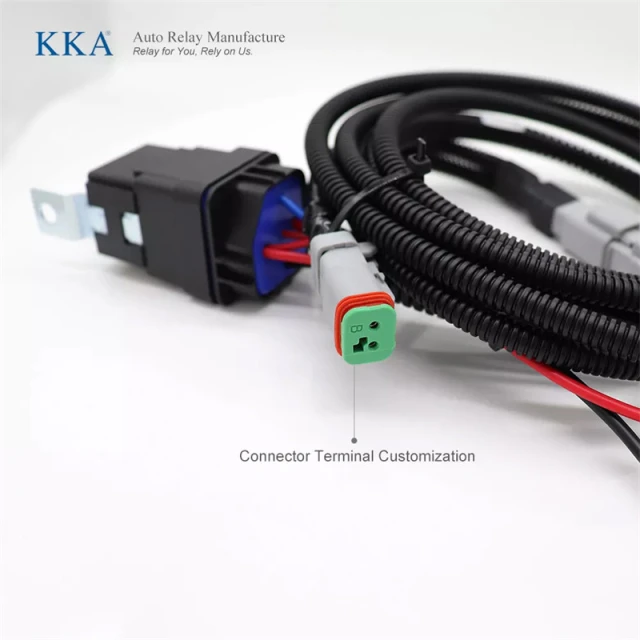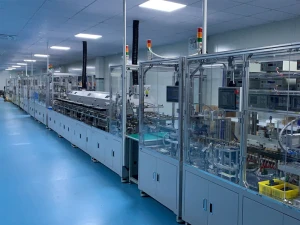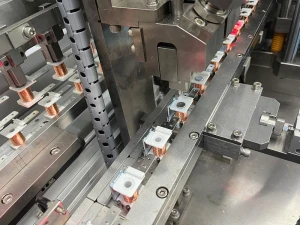Address:No. 196-5, Wei Twelve Road, Yueqing Economic Development Zone, Wenzhou City, Zhejiang Province
Email:info@kkacn.com
Date: 2025.10.20 Click: 2
I. Introduction: Automotive Wiring Harnesses --the ``nerve centre"of Modern Vehicles
As the ``nervous system"for vehicle power and signal transmission, automotive wiring harnesses performs the core functions of connecting engine control units, sensors, actuators, and onboard entertainment systems. Along with the trend vehicle intelligence intelligent and electric vehicle, the complexity and performance of harness design have been greatly improved from traditional oil automobile to new energy automobile. Their reliability has a direct impact on vehicle safety (e.g., braking system signal transmission) and operational efficiency (e.g., battery energy management), making them a key area of competition among automakers for new technologies.

In the age of smart driving, the role of wiring harnesses is further developed: they are not only "conduits" for electricity and data, but also "information superhighways" that support high bandwidth communications and low latency response. In the future, wiring harnesses may even become "invisible" with the breakthrough in on-board wireless technology. However, at this stage, technological advancement is still the key factor to determine the level of vehicle intelligence.
II. Technological Upgrades: Material Innovation and Lightweighting Breakthroughs
1.Application New Wiring Harness Materials
Traditional copper wires are gradually being replaced by aluminum alloys, fiber optics and other materials due to their light weight and high cost. For example, aluminum alloy wires can reduce weight by 30%-50% while retaining conductivity, so it is suitable for high voltage wire for new energy vehicles. Fiber optics, with its ultra-high speed (up to Gbps) and anti-electromagnetic interference (EMI) features, has become the preferred method for sensor data transmission by autonomous driving sensors. In addition, the widespread use of environmentally friendly insulation materials (e.g. halogen-free polyolefin) not only meets the recyclability requirements of the EU ELV Directive, but also reduces toxic emissions during combustion.
2.Challenges and solutions for Lightweight Design
The use of thin-walled wires (wall thickness reduced from 0.35mm to 0.2mm) and micro-connectors reduced the size of the wire harness by over 20%. Modular integrated design further reduces the length and weight of the wire harness by combining multiple functional units into a single component. Tesla's Model 3 wiring harness, for example, has been shortened from 3 kilometers to 1.5 kilometers overall in conventional cars, directly improving assembly efficiency and vehicle range.

III. The Age of Smart Driving: High Bandwidth and Reliability Challenges
1. Autonomous Driving's Stringent Requirements for Wiring Harnesses
Level 4 autonomous driving involves processing a large amount of data from sensors such as lidar, cameras and millimeter-wave radar simultaneously. Transmission bandwidth must be increased from the current 100Mbps to more than 10Gbps. In addition, wiring harnesses must display an ultra-low latency (<1ms) and be resistant to electromagnetic interference to ensure real-time safety commands such as emergency braking.
2. Adaptive Innovation of Wiring Harness Architecture
Traditional "point-to-point" wiring harness layouts are being replaced by regional architecture. This structure centrally manages peripherals through zoning controllers such as front and back, reducing long-distance cross-zoning wiring, weight, and cost. In addition, the widespread adoption of in-car Ethernet (100BASE-T1/1000BASE-T1) has enabled high-speed communication using single twine strands, replacing the multi-wire harness design of traditional CAN bus.

IV. INTRODUCTION Sustainable Development: Environmental Regulations and Full-Life Cycle Management
1. Green Manufacturing and Material Recycling
The EU ELV Directive requires new vehicle wiring harnesses bundles to be more than 95 per cent recyclable after 2025. To this end, the company is developing bio-insulating materials (such as polylactic acid) and closed-loop circulatory systems. Aptiv, for example, uses mechanical separation technology to increase recycling of copper and plastic from waste wiring harnesses to 98%, significantly reducing its carbon footprint.
2. Energy Efficiency Optimization and reduction of Carbon Footprint Reduction
Low-resistance conductors,such as silver-plated copper alloys, can reduce power losses by 5%-10% and indirectly improve the range of new energy vehicles. Lightweight design reduces battery energy consumption by reducing vehicle weight. It is estimated that for every kilogram of wire harness weight lost, the vehicle's electricity consumption decreases by 0.05 kilowatt-hours per 100 kilometres.

V. Global Supply Chain: conflict between cost, efficiency and quality
1. Global Supply Chain Layout
Asia (China and Southeast Asia), with its low-cost labor costs and well-developed infrastructure, accounts for over 70% of global wiring harness manufacturing. Huguang Co., Ltd., for example, built a plant in Vietnam, reducing labor costs by 40%. At the same time, companies in Europe and the United States are focusing on high-end markets. For example, Leoni developed a high-voltage silicone wiring harness for the BMW i7 with a temperature resistance rating of 200°C.
2. Key challenges and strategies
Fluctuations in raw material prices (copper accounts for 60% of the cost of wiring bundles) have forced companies to hedge and replace materials. Trade frictions have led to a regionalization of production: Tesla has required suppliers to build plants near Mexico and the United States to reduce tariff risks. In addition, digital management,such as MES systems, allows real-time monitoring of production process, reducing delivery cycles 30%.
VI. INTRODUCTION Future Outlook: Disruptive Trends in Wiring Harness Technology
1. Potential shift from wired to wireless
On-board wireless technologies such as UWB and 60GHz millimeter wave are in the field testing stage. The BMW iX model uses a wireless BMS (battery management system) to reduce wiring by 90%. Within the next five years, wireless technology may cover 80% of short-range communication scenarios in cars.
2. AI and Big Data-Driven Wiring Harness Design
Artificial intelligence simulation tools can simulate the performance of wire bundles under extreme conditions,such as vibration and temperature, reducing physical testing cycles by over 50%. By collecting vehicle operation data, Big Data can predict wiring harness failure (such as poor contact) and implement active maintenance.
Address:No. 196-5, Wei Twelve Road, Yueqing Economic Development Zone, Wenzhou City, Zhejiang Province
Email:info@kkacn.com
Please leave your requirements and contact information, and we will send you the quotation information as soon as possible.